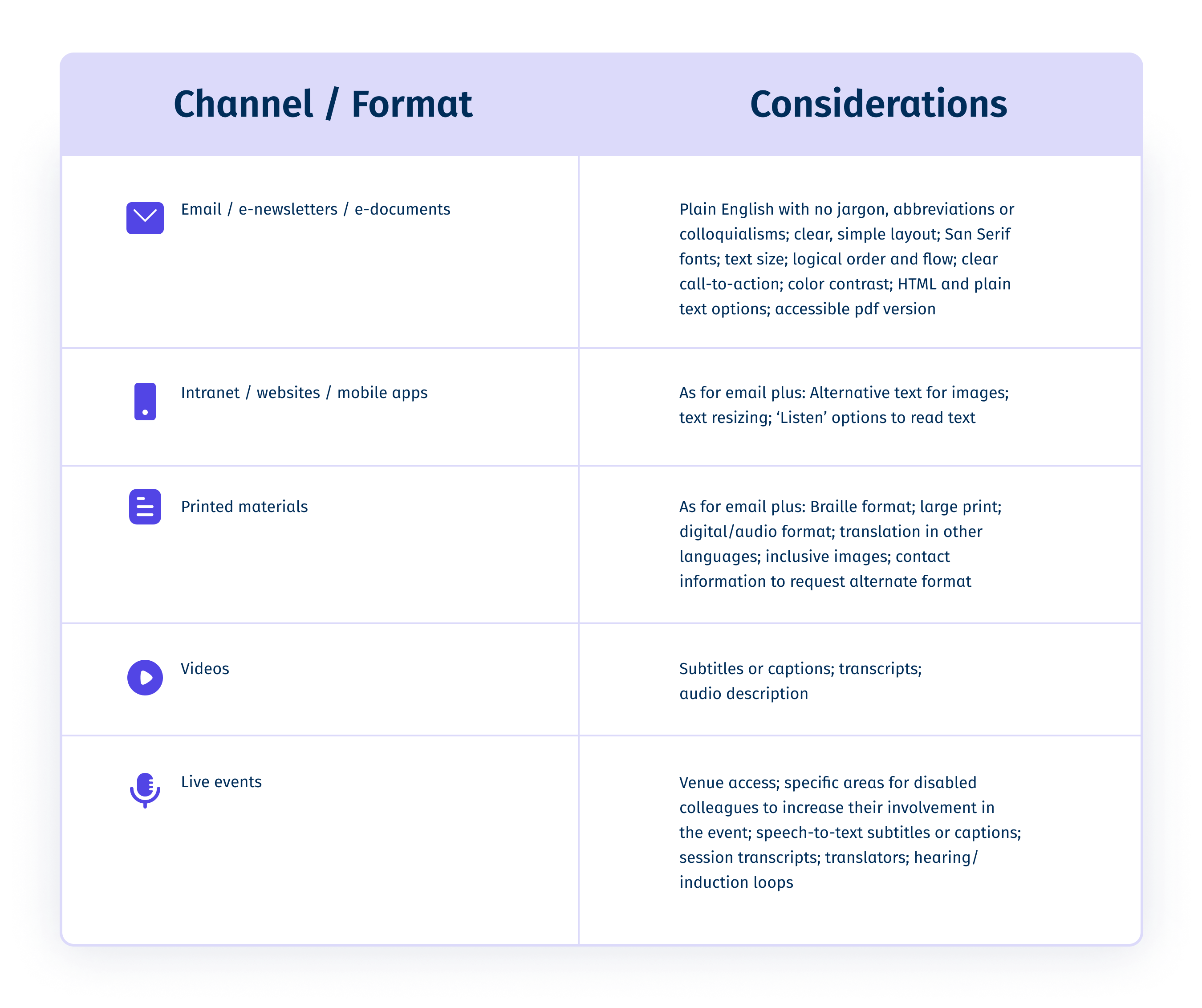By Joanna Hall
— July 22nd, 2022
There’s much focus on creating diverse and inclusive cultures within our workplaces.
But if we are to enhance and appreciate our colleague diversity and ensure the workplace is truly inclusive, we have a responsibility as communicators to uphold and role-model this too, taking a best practice approach to producing accessible, inclusive communications.
Communications sent on behalf of an organization are a vital component of what it means to feel involved, informed, and respected within the workplace.
With the number of disabled people in employment increasing year on year, as reported by both UK and US Governments, it’s ever-more important that communicators are informed and understand the needs of people with disabilities within their organization and do what they can to best meet those needs.
Being disabled means "having a physical or mental impairment that has a ‘substantial’ and ‘long-term’ negative effect on your ability to do normal daily activities"— UK Equality Act 2010.
The main different disability groups to consider are:
- Visual impairment/blindness
- Hearing impairment/deafness
- Mobility/physical impairments
- Cognitive impairments/learning disability
- Mental health conditions
- Long-term health conditions
More broadly speaking, to be fully inclusive to all employees it’s also worth considering other factors or barriers to communication like reading ability, or English as a second language.
There’s absolutely no expectation of communicators to be experts on the varying disabilities per se, but there’s much we can learn, consider and adapt to be more inclusive in our communications.
As with any audience group, there’s no one-size-fits-all approach that will suit everyone’s needs. However, with the growing trend and capability for personalization of communications, employees, disabled or not, want to receive information in ways that suit and are tailored to them.
So, offering a choice of channel, format, and device are obvious options to improve accessibility and therefore enhance inclusivity.
Accessibility means ensuring that disabled people can access your communications, e.g. Intranet, social channels, events, surveys, and that there are no barriers that prevent this.
Making something accessible means providing alternative means (formats, functionality, channels, or options) to access what’s on offer if the "standard" offer is not accessible.
Inclusive communication is purposefully considered and designed to reach an audience as broad and diverse as possible, with accessibility for different groups built-in as part of regular business communications.
Here are ways to consider increasing the accessibility of your communication approach:
# 1. Develop an inclusive communication policy
Having a policy will define how your organization will commit to providing inclusive communications. It’s prudent and valuable to involve disabled employees in the process to provide you with suggestions and feedback in both its development and evolution, ensuring it is fit for purpose.
Ensure the policy is published widely across your organization, and even consider offering training, to increase awareness and knowledge of good, inclusive communication practices.
# 2. Set up an employee champion network
Every professional communicator will be adept at audience profiling and tailoring communications to suit their varying audiences, but how often have you considered accessibility as an essential component of this practice when developing a communication plan, utilizing a key communication channel or creating content?
Building a community of advisors formed of employees representing varying communication needs can be a valuable way to understand and help overcome the communication challenges and barriers faced by people with disabilities.
Additionally, your community of advisors could test your communications and channels for accessibility, readability, inclusivity, and usability before you share them with the wider organization.
# 3. Make accessibility a priority focus
With every piece of content created or channel used there is an opportunity to make it more inclusive to a wider audience. The more consideration you give to getting your materials and environment right in the first place, the more impactful and engaging your approach will be to everyone.
It just requires more concerted thought from the outset until it becomes your normal way of communicating.
Below are some practical considerations for creating more inclusive and accessible communications and channels to get you started:
- Guidance on how to produce accessible PDFs: http://www.adobe.com/accessibility/products/acrobat.html
- Guidance on web content accessibility: https://www.w3.org/TR/WCAG21/
- Analyze your website color contrast: http://www.colorsontheweb.com/colorcontrast.asp

